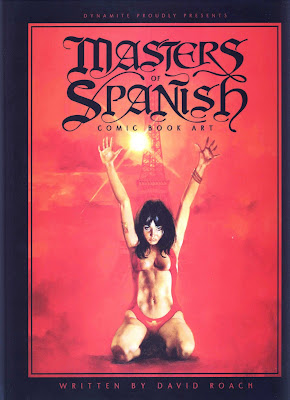by Alan Grant and John Wagner (story) and Ian Gibson (art)
Marvel Graphic Novel, 1990
'The Chronicles of Genghis Grimtoad' (49 pp) was published by Marvel in 1990.
Alan Grant and John Wagner were veteran comics writers, having done memorable work for 2000 AD and a number of U.S. publishers, when they teamed up to write this humor-centered parody of the 'Dungeons and Dragons' storyline.
I won't disclose any spoilers, save to say that the plot involves your usual fantasy world (Shadow-Earth) and your usual fantasy kingdom (Haven) under assault by the hordes of an evil wizard (Toadthrax).
It transpires that Eric, the Prince of Haven, is obliged to flee for his life across most of the World. His goal is the land of Torbeck, where he will be given sanctuary. Accompanying Eric in his flight are his supermodel mother, Queen Jade; the barbarian warrior Quanah; knight of the ream Sir Hakkem; and apprentice sorcerer Genghis Grimtoad. A worthy company of heroes, but also a target for the malevolent sorcery of Toadthrax................
I'm not a big fan of fantasy humor and parody, but Grant and Wagner's story is content to insert the gags and jokes in a mild way that doesn't strain the reader's patience.
Where 'The Chronicles of Genghis Grimtoad' shines is with Ian Gibson's artwork. Gibson, another 2000 AD alumnus, uses a quasi-psychedelic range of colors in his painted artwork for this graphic novel. The color separations are outstanding for a comic of this era.
The verdict ? While I can't say that 'Grimtoad' is a title you need to rush out and buy, if you happen to see it for sale for $10 or less at your used bookstore or comics shop, it's worth picking up.































































.jpg)
















